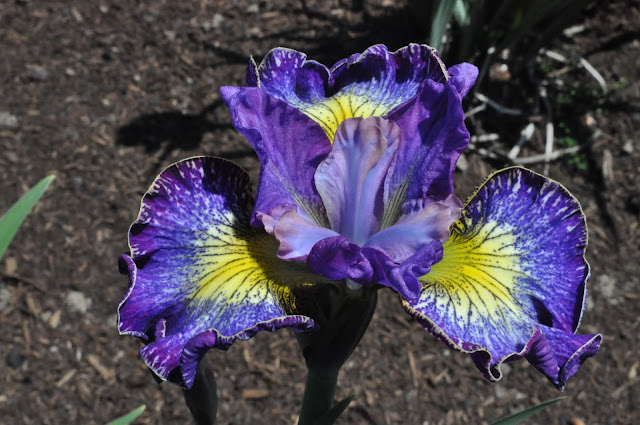Kathleen Sayce
September 20, 2015
Many irises are easy to transplant at
any time of year. Dig them up, divide, cart to new homes and tuck in.
Clip off some leaves to reduce moisture loss while the new roots
form, and away they go. Not so for PCIs. Treat them this way, and they go root tips up before you can find your watering can.
 |
| Healthy PCI transplants: new fans, and healthy new white roots. Both of these I. douglasiana pieces are ready to plant. |
There are two times of year to
successfully transplant PCIs: Autumn and Spring.
At these times, PCI roots are in active
growth. Check the roots, removing soil gently around the base of a
fan or two. If there are white roots, one to four inches long, then
get out the shovel and start digging. It's time.
 |
| New fans on a PCI, but no new roots yet; this plant needs to wait a few weeks before being divided. |
Why Autumn and Spring for root growth?
Pacifica Iris are native to the West Coast of North America, which
has a Mediterranean climate––during the drought period each
summer, these and other native species go dormant. In mild
winter climates, PCI may have live roots all winter, but they dry down and wait out dry summers.
Summer drought duration depends on
latitude, the farther south you are, the longer the duration, which
varies from less than three months to more than ten months on the
West Coast. I garden at 46°N, so droughts usually last less than
three months, though this year it was more than five.
If you water regularly, PCI initiate
new roots earlier in the fall than do those depending on rain. You
can divide and transplant much earlier in the fall and later in the
spring.
 |
| This flat of PCI seedlings has been watered regularly all summer, and is ready to move into the garden. |
PCI seedlings in pots are tough, and
can stand being transplanted several times in the first year or two
of life. Even larger plants, one to five gallons, can withstand
transplanting slightly outside the Autumn or Spring periods. These
have all had regular water, as they must to live in pots.
Other tips:
Mulch after planting to keep roots cool
Amend soil with carbon, such as compost
and biochar
Move plants on cool cloudy damp days
rather than on hot sunny days
Add 'Superthrive' (a registered vitamin
formula for plants) to the watering can
Water well for a few weeks after
planting
Use a dilute liquid fertilizer when
watering
Every Autumn I host a 'Come and Dig
PCI' day in my garden, to share out plants to other gardens in my
community. I checked my plants this week; new fans are starting to
form, and new roots are short. I'll wait a week or two, until new
roots are more than an inch long.
There are exceptions; one variety has long white roots and could be divided now, but it
will tolerate moving in a few weeks. The seedling PCI can be planted
anytime from now until early November. They are much tougher than fan sections, which is why growing PCI from seed is so successful for many gardeners. Society for Pacific Coast Native Iris will hold its seed exchange from 1 November to the end of the year, so now is the time to be thinking about what species and hybrids you'd like to grow in your garden from seed.
 |
| New white roots, this PCI is ready for a new home. |
For western gardeners, Autumn is the
best time to plant many native plants, not just Pacifica Iris. Trees,
shrubs, perennials, ferns and grasses all do well if planted now
(late September to early November), as the weather cools and moisture
arrives from the Pacific Ocean over western North America. This gives
the plants a jump on growth for the coming year by establishing good
root systems first, with much less water use now and in coming years.
























































